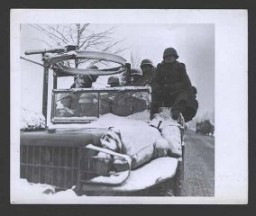You searched for: 美国网上赌场,美国在线赌场网址,美国拉斯维加斯赌场,【www.22kk66.com,复制打开网址】,拉斯维加斯赌场攻略,美国赌场攻略,美国拉斯维加斯网上赌场,贝拉吉奥赌场,美国附近赌场,美国赌场年龄,美国拉斯维加斯赌场排名,美国拉斯维加斯赌场攻略,美国网上赌城,,22kk66.com网址KAfffKKxBKBEdfcdB
<< Previous | Displaying results 26-50 of 242 for "美国网上赌场,美国在线赌场网址,美国拉斯维加斯赌场,【www.22kk66.com,复制打开网址】,拉斯维加斯赌场攻略,美国赌场攻略,美国拉斯维加斯网上赌场,贝拉吉奥赌场,美国附近赌场,美国赌场年龄,美国拉斯维加斯赌场排名,美国拉斯维加斯赌场攻略,美国网上赌城,,22kk66.com网址KAfffKKxBKBEdfcdB" | Next >>
-
Aerial view of the Nuremberg Palace of Justice
PhotoAerial view of the Nuremberg Palace of Justice, where the International Military Tribunal tried 22 leading German officials for war crimes. Nuremberg, Germany, November 1945.
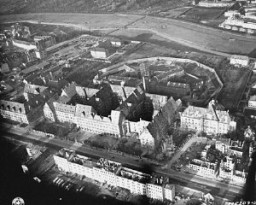
-
SS female auxiliaries
PhotoSS female auxiliaries show with mock sadness that they have finished eating their blueberries, July 22, 1944. From the Hoecker Album of 116 photographs taken during the last six months of Auschwitz, between June 1944 and January 1945.
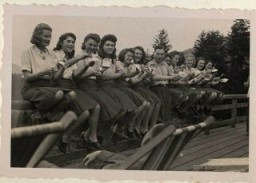
-
Deportation from the Siedlce ghetto
PhotoJewish women and children are transported by horse-drawn wagon during a deportation action in the Siedlce ghetto. During the liquidation of the ghetto on August 22-24, 1942, 10,000 Jews were deported to the Treblinka killing center.
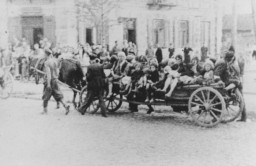
-
Amalie Petranka (later Salsitz)
PhotoAmalie Petranka (later Salsitz) at 22 years of age. She gave this photo to Norman Salsitz shortly after they met. Photograph taken in Stanislawow, Poland, on October 10, 1939.
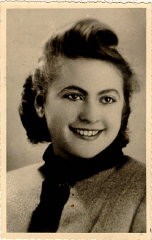
-
Wedding in the Bad Reichenhall displaced persons' camp
PhotoPhotograph taken during the wedding of Ibby Neuman and Max Mandel at the Bad Reichenhall displaced persons' camp. Germany, February 22, 1948.
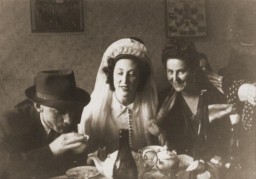
-
HIAS immigration certificate
PhotoHIAS immigration certificate issued to Manius Notowicz in Munich, Germany. The document states that Notowicz will travel on the Marine Flasher on February 22, 1947, to New York City.
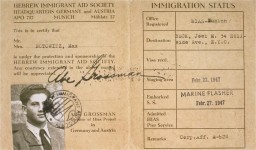
-
1943: Key Dates
ArticleExplore a timeline of key events during 1943 in the history of Nazi Germany, World War II, and the Holocaust.

-
War Refugee Board: Background and Establishment
ArticleIn January 1944, FDR established the War Refugee Board which was charged with “immediate rescue and relief of the Jews of Europe and other victims of enemy persecution.”
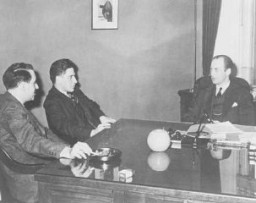
-
Elie Wiesel Timeline and World Events: 1928–1951
ArticleSurvivor Elie Wiesel devoted his life to educating the world about the Holocaust. Learn about key events in the world and his life from 1928–1951.
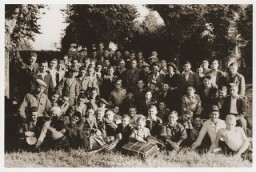
-
Fürstengrube
ArticleLearn about Fürstengrube subcamp of Auschwitz, including its establishment, administration, prisoner population, and forced labor and conditions in the camp.
-
The Holocaust and World War II: Key Dates
ArticleRead a detailed timeline of the Holocaust and World War II. Learn about key dates and events from 1933-45 as Nazi antisemitic policies became more radical.

-
World War II in Europe
ArticleWorld War II lasted from 1939 to 1945, when the Allies defeated the Axis powers. Learn about key invasions and events during WWII, also known as the Second World War.
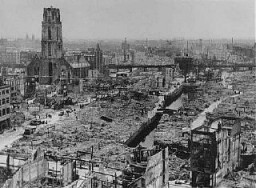
-
1944: Key Dates
ArticleExplore a timeline of key events during 1944 in the history of Nazi Germany, World War II, and the Holocaust.
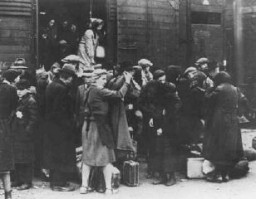
-
Invasion of the Soviet Union, June 1941
ArticleOn June 22, 1941, Nazi Germany invaded the Soviet Union. The surprise attack marked a turning point in the history of World War II and the Holocaust.

-
World War II Dates and Timeline
ArticleWorld War II was the largest and most destructive conflict in history. Learn about key WWII dates in this timeline of events, including when WW2 started and ended.
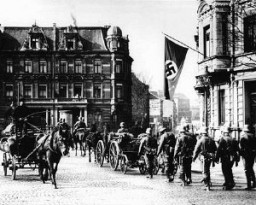
-
SS Police State
ArticleThe SS oversaw policing, intelligence, and the camp system in Nazi Germany. Learn more about the Schutzstaffel and its rise to power.
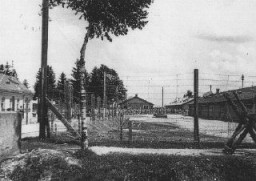
-
Mobile Killing Squads
ArticleLearn more about Nazi mobile killing squads (Einsatzgruppen) killing activities in the Soviet Union during World War II.
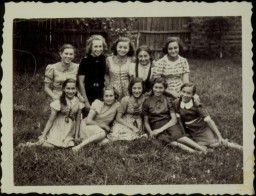
-
Auschwitz Report
Timeline EventJune 18-22, 1944. On this date, Rudolf Vrba and Alfred Wetzler's firsthand account of Auschwitz went public worldwide.
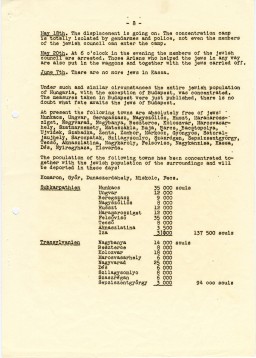
-
War Refugee Board: Activities - Photographs
Media EssayOn January 22, 1944, President Franklin D. Roosevelt announced a new policy to rescue and provide relief for Jews and other groups persecuted by Nazi Germany and its collaborators. The War Refugee Board, tasked with carrying out these programs, likely saved tens of thousands of lives. The War Refugee Board was the first and only official American response to the crimes we now call the Holocaust.
-
Stutthof - ID Cards/Oral Histories
Media EssayStutthof began as a civilian internment camp under the Danzig police chief and then became a "labor education" camp under the German Security Police. In January 1942, Stutthof became a regular concentration camp. Stutthof prisoners were used as fo...
-
Relocation of Soviet Citizens
FilmGerman forces launched Operation "Barbarossa," the invasion of the Soviet Union, on June 22, 1941. The German army made rapid initial progress in the campaign into Soviet territory. In this German military footage, German soldiers separate women and children from men in a Soviet village.
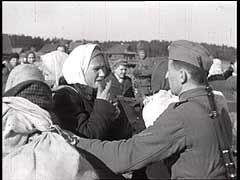
-
Stephen S. Wise and Bernard Deutsch
PhotoAmerican Zionist leader Rabbi Stephen S. Wise (right) with Bernard Deutsch, president of the American Jewish Congress, before making a protest to President Franklin D. Roosevelt against religious persecution in Germany. New York, United States, March 22, 1933.
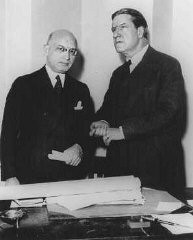
-
Arrest of passengers from the Aliyah Bet ship Parita
PhotoA British policeman (left) organizes the arrest of passengers from the Aliyah Bet ("illegal" immigration) ship Parita after they disembarked near Tel Aviv. Palestine, August 22, 1939.
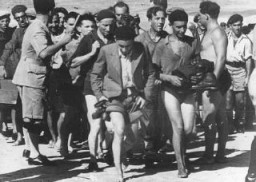
-
Poster in Hebrew for army recruitment and rescue efforts
PhotoA poster in Hebrew soliciting contributions from members of the Yishuv (the Jewish community of Palestine) for army recruitment and for efforts to rescue European Jewry. The Hebrew text reads "Give a hand in rescue, the Fund for Recruitment and Rescue." Palestine, July 22, 1943.

-
US troops move up to the front to stop the German advance
PhotoDuring the Battle of the Bulge, US troops move up to the front in open trucks in subzero weather to stop the German advance. December 22, 1944. US Army Signal Corps photograph taken by J Malan Heslop.
